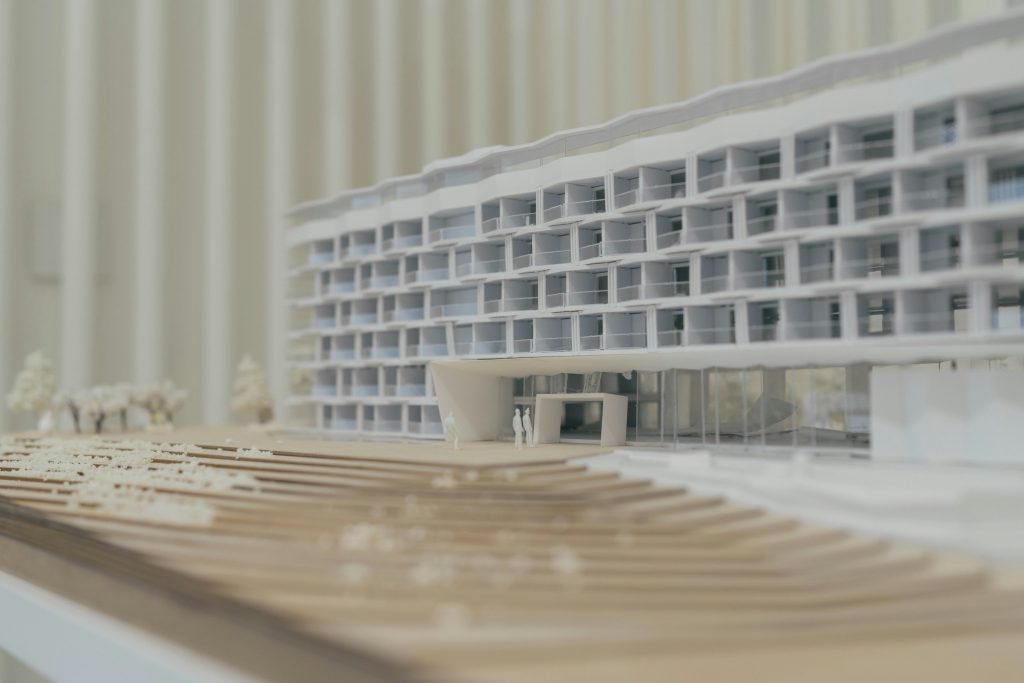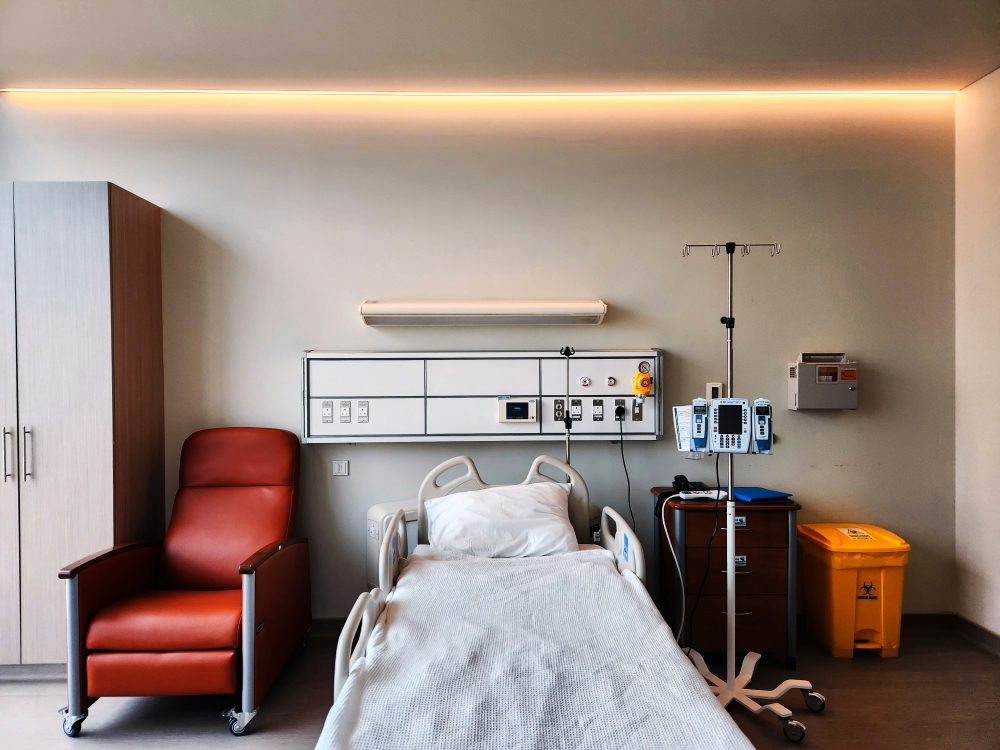Hospitals are among the most complex buildings to manage sprawling facilities that run 24/7, house thousands of people, and demand absolute reliability from their infrastructure.
From critical ventilation systems to energy-intensive diagnostics, a single disruption can jeopardize patient safety and operational continuity. While traditional Building Management Systems (BMS) and Building Automation Systems (BAS) offer some control, their siloed data and reactive approach fall short in optimizing hospital performance.
This is where digital twins for hospitals come in. Unlike static dashboards, a digital twin creates a dynamic, virtual replica of the hospital — integrating IoT sensors, facility systems, and real-time data to enable predictive maintenance, energy optimization, and operational resilience.
Neuron Digital, a leader in digital twin solutions, empowers healthcare facilities to enhance efficiency, hygiene, and safety beyond conventional BMS/BAS. This article explores how digital twins work, their key applications, and why they are critical for future-proofing hospitals.

What Is a Building Digital Twin for Hospitals?
A building digital twin mirrors the physical built environment of a hospital — its wards, equipment, HVAC systems, power distribution, water supply, etc. By combining IoT sensors, BIM (Building Information Modelling), and real-time data feeds, the twin continuously reflects the real operational conditions.
For hospital administrators and the management department, this translates into unprecedented capabilities
Holistic facility visualization: zoom from a city-wide overview down to individual room-level analytics
Smart hygiene enforcement: ensure hygiene and toileting safety, what’s more, optimize sanitation resource allocation.
Infection control: combat airborne pathogens with real-time IAQ tracking (PM2.5, CO₂, VOCs) in critical zones like ORs, ICUs, or isolation rooms.
Resource intelligence – monitor energy usage, water systems, elevator operations, and security access in one dashboard
Immersive experience – 3D navigation, augmented reality (AR) for surgery & diagnostics, virtual patient consultations.
Unlike a traditional BMS, which typically controls systems in isolation, a digital twin acts as a knowledge hub integrating operational history, asset maintenance, and real-time sensor data into a single decision-making platform.
Hospitals: Why Building Digital Twins Matter?
Hospitals are unlike any other buildings:
Mission-critical reliability: critical hospital systems – from life support to sterility maintenance – demand absolute reliability where any downtime becomes a patient safety concern.
Energy-intensive operations: hospitals rank among the largest public-sector energy consumers.
Stringent hygiene standards: strict protocols for air quality, sterilization, and waste management must be maintained without exception.
Complex flows: thousands of patients, staff, and visitors move through facilities every day, requiring efficient circulation and energy management.
Regulatory pressure:from carbon neutrality goals to infection control standards, compliance adds operational layers.
A hospital-focused digital twin addresses these challenges by making operations predictive rather than reactive. For instance, by detecting anomalies in humidity levels, it can alert teams before conditions threaten equipment or patient well-being. This has already been proven in Neuron’s work on advanced humidity control for environments where coastal humidity can generate irreversible mold damage.
Digital Twins vs. Traditional BMS/BAS in Hospitals and Clinics

Traditional Building Management Systems (BMS) and Building Automation Systems (BAS) are widely used in hospitals and clinics to control essential services such as HVAC, lighting, power, and security. They are effective at switching systems on or off, adjusting set points, and raising alarms. However, in complex healthcare facility management, they show three critical limitations:
Data silos: Information about air quality, operating theatre humidity, medical gas supply, and energy use is scattered across separate dashboards. This fragmentation makes it difficult for facility management teams to see the bigger picture or act quickly.
Reactive management: BMS/BAS typically flag issues after a fault occurs — such as a sudden HVAC failure in a surgical suite or an unexpected power load in an ICU — often forcing costly, last-minute fixes.
Rigid workflows: Adapting conventional systems to fast-changing requirements in healthcare is cumbersome. Setting up new isolation wards, triage tents, or temporary clinics during a pandemic often requires manual reconfiguration and delays.
By contrast, Neuron’s Building Digital Twin transforms how hospitals and clinics manage infrastructure:
Centralised knowledge: Data from all building systems is consolidated into a single platform, giving the hospital management department a 360° view of operations.
Real-time visualisation: Interactive 3D models allow staff to monitor everything from ICU air pressure to ward energy use.
Automated Adjustment and Optimization: By analyzing energy consumption across different zones, the system generates the most efficient energy use patterns tailored to real-time demand.
Predictive maintenance: Historical patterns are analysed to anticipate failures in critical systems before they disrupt care.
The difference goes beyond technology. Digital twins bring strategic knowledge management to healthcare facilities. Hospitals and clinics using Neuron’s platform can preserve institutional expertise, transfer insights across staff rotations, and continuously refine operations, ensuring safer, more resilient environments for patients and staff.
Digital Twin Solution for Hospitals and Clinics
A leading healthcare institution in Hong Kong, selected Neuron’s Smart Hospital Platform to achieve three critical operational objectives: enhanced security, guaranteed system reliability, and optimal energy performance. Our solution delivered transformative outcomes through its phased intelligent implementation:
Operational Visibility & Control
- Real-time monitoring of critical equipment (chiller plants) and facility utilization
- Data-driven decision making through live analytics dashboards
- 24/7 system health monitoring with predictive maintenance alerts
Intelligent Infrastructure Upgrades
- AI-powered anomaly detection reduced manual monitoring workload
- Smart washroom systems automate maintenance scheduling and ensure users’ safety when toileting
Energy Optimization
- Equipment performance benchmarking identified energy savings opportunities
- Dynamic adjustment of HVAC systems based on analysis of live data and occupancy patterns
Benefits for Healthcare Stakeholders
Facility Managers
Gain a unified platform to monitor across buidling systems and medical systems in different areas. Instead of chasing siloed alerts, they can see how a fault in one system affects the hospital as a whole, reducing response times and keeping critical areas like ICUs and operating theatres safe.
Patients and Families
Experience more comfortable and more reliable care environment. Advanced fall detection systems automatically when vulnerable patients experience accidents, enabling rapid response. Precision climate control maintains optimal temperatures in recovery wards to promote healing. Together, these systems create a resilient hospital ecosystem that minimizes operational disruptions, reduces stress for patients and staff alike, and ensures treatments and appointments proceed as scheduled.
Policymakers and Health Systems
Aggregated insights from multiple hospital twins help health authorities plan for regional demand, allocate resources more equitably, and measure the real impact of energy efficiency or infection control policies. For national health systems like the NHS, this supports data-driven decision-making at scale.
Hospitals and Clinics Must Work Flawlessly
Hospitals and clinics are among the most demanding environments to operate: systems must work flawlessly, energy use is high, and patient safety is always on the line. Traditional BMS and BAS can only go so far. By adopting Neuron’s Building Digital Twin, healthcare facilities can move beyond reactive control to predictive, knowledge-driven management.
Furthermore it delivers measurable improvements in efficiency, sustainability, and patient experience. They also ensure that institutional knowledge is preserved, so hospitals continue to learn and adapt over time.
For hospital directors, facility managers, and policymakers, the message is clear: the next generation of healthcare resilience depends on intelligent building operations.
Learn how Neuron is shaping the future of smart hospitals: visit our digital twin overview or explore the Building Digital Twin product page to schedule a customised demo.
References
Read more from our case studies and customer references
Frequently Asked Questions
What is a hospital digital twin?
A virtual replica of a hospital’s infrastructure that combines BIM and IoT data for real-time monitoring and scenario planning.
How is it Digital Twin different from Hospital BMS/BAS?
BMS/BAS control systems in silos. A Building Digital Twin unifies all data, predicts failures, and supports planning for surges or emergencies.
What are the main benefits of digital twins for hospitals?
Predictive maintenance uses digital twin data analytics to detect anomalies, predict failures, and schedule maintenance proactively. This reduces unexpected breakdowns, improves asset lifetime, and ensures a seamless guest experience.
Does it improve patient safety?
Yes. Instant response triggers for accidents, safeguarded air quality , controlled facility access, and stable clinical environments — all converging to create a safer, more controlled care ecosystem.
Is using hospital digital twin secure?
Yes. Neuron ensures GDPR/HIPAA compliance with encrypted, secure cloud and open protocol support.
Who uses digital twin in hospitals?
Facility managers, hospital administrators, clinicians, patients, and policymakers.